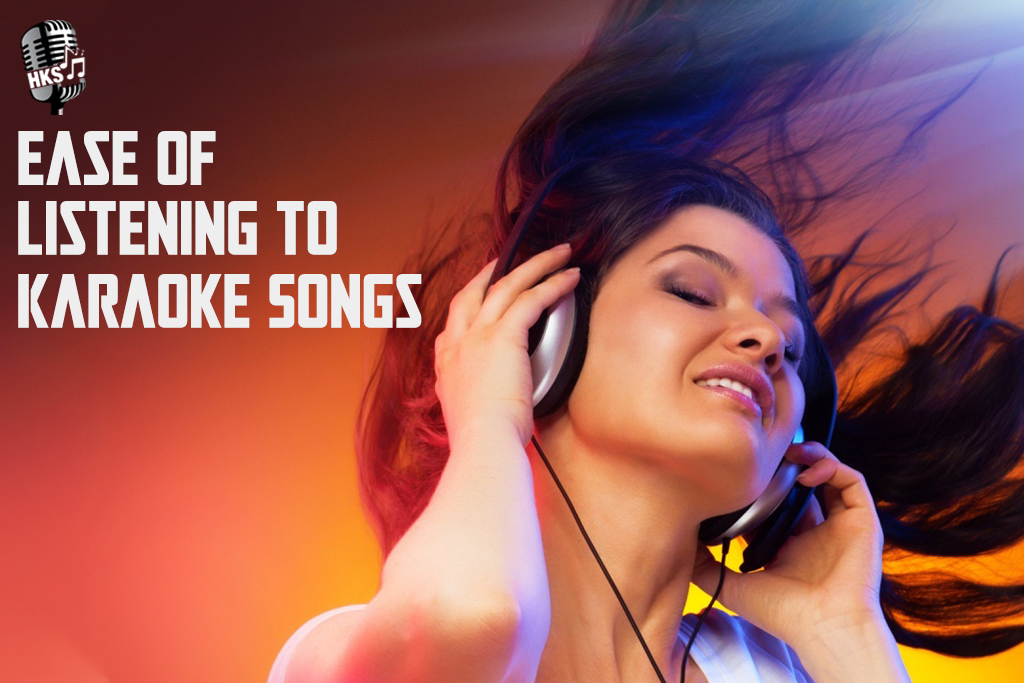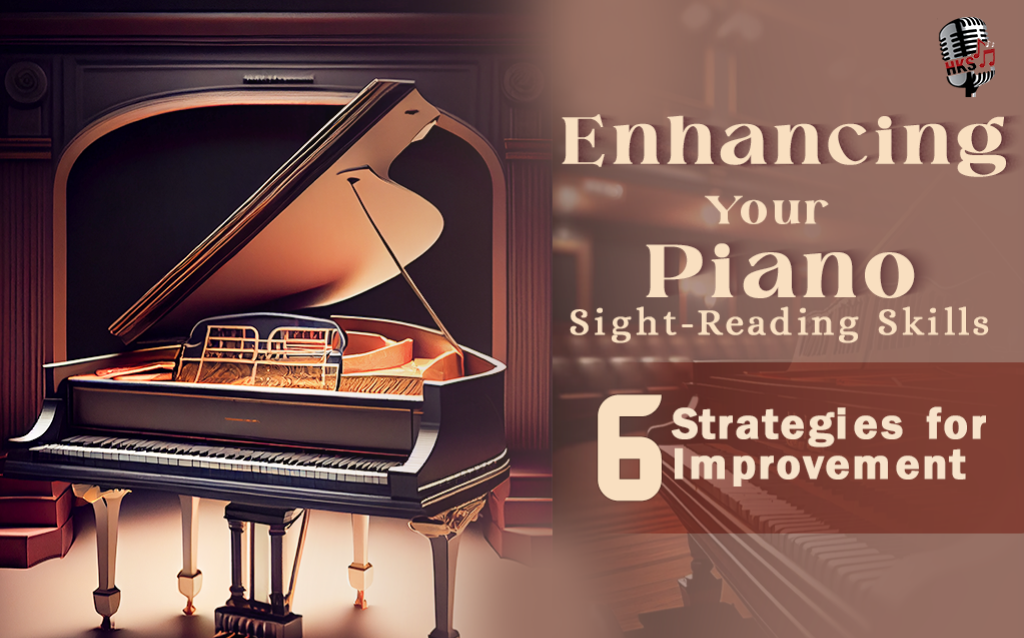Black Friday Store Wide Sale | 35% Off | USE COUPON CODE - BLACKFRIDAY35
.jpg)
For centuries, Ghazals have been at the heart of South Asian poetry and music. Rooted in Sufi traditions and refined in Persian and Urdu literary cultures, Ghazals capture the delicate emotions of love, loss, longing, and spirituality. While traditionally sung in poetic gatherings and mehfils, the Ghazal has now found a new stage in modern karaoke culture, blending timeless poetry with accessible singing experiences. In this blog, we’ll explore how Ghazals have evolved and how karaoke is playing a unique role in reviving and reshaping this classical art form for today’s generation.
Understanding the Origins: The Ghazal as a Poetic Form
The Ghazal is believed to have originated in 7th-century Arabia, initially as a poetic expression of pain, separation, and the beauty of love, often unattainable and spiritual. It later traveled to Persia, where it flourished in the hands of legendary poets like Rumi, Hafiz, and Omar Khayyam. As Persian influence spread across the Indian subcontinent, so did the Ghazal.
In India, the Ghazal found a home in the Urdu language, which fused Persian, Arabic, Turkish, and local dialects. The literary tradition of the Ghazal matured with poets like Mir Taqi Mir, Mirza Ghalib, and Daagh Dehlvi, whose verses remain influential even today. A traditional Ghazal is composed of independent couplets (shers) that follow a strict rhyme scheme and meter, yet each couplet expresses a complete thought, often combining romantic yearning with philosophical reflection.
The Birth of the Ghazal
The word "Ghazal" comes from the Arabic word meaning "to talk to women" or "to speak of love." The earliest Ghazals appeared in Arabic in the 7th century and were later refined by Persian poets like Rumi and Hafiz. Eventually, the form made its way into South Asia, where it blossomed in Urdu, Hindi, Punjabi, and other languages.
In its classic form, a Ghazal is made up of couplets (shers), each of which can stand independently but is thematically connected through emotion or symbolism. The beauty of a Ghazal lies in its blend of structured rhyme, deep philosophy, and intense emotional depth.
Ghazal as Music: From Mehfils to Mainstream
While the Ghazal was initially a literary form, it gradually transitioned into a musical genre. During the Mughal era, poets and classical musicians began setting Ghazals to music, blending Hindustani ragas with lyrical storytelling. These were performed in private gatherings called mehfils, attended by royalty, nobles, and connoisseurs.
The Classical Era
Singers like Begum Akhtar, K.L. Saigal, and Bade Ghulam Ali Khan infused classical elements into Ghazal singing, with emotive renditions that prioritized vocal purity, subtlety, and intricate musical phrasing. These artists performed with minimal instrumentation, allowing the melody and poetry to shine.
The Golden Age of Ghazal (1970s–1990s)
The period from the 1970s to the 1990s is considered the Golden Age of Ghazals in music, thanks to artists who brought the genre to the masses:
- Jagjit Singh: Revolutionized Ghazals by using modern arrangements—guitar, violin, and harmonium—and simplified compositions. Jagjit Singh's "Tum Itna Jo Muskura Rahe Ho" and "Hothon Se Chhoo Lo Tum" became iconic.
- Ghulam Ali: Known for his rich classical training and emotive delivery, with hits like "Chupke Chupke Raat Din."
- Pankaj Udhas: Popularized Ghazals through cassette culture in India, bringing the genre to middle-class households.
- Mehdi Hassan: Revered as the "Shahenshah-e-Ghazal" for his unmatched command over both classical and light Ghazals.
This era made Ghazals accessible without losing their poetic and emotional core.
The Modern Era: A Shift Toward Fusion and Accessibility
In the late 1990s and 2000s, the explosion of pop, Bollywood, and electronic music started to push Ghazals out of the mainstream spotlight. However, they found refuge in independent music and digital platforms.
Younger artists such as Hariharan, Talat Aziz, and even crossover acts like Rekha Bhardwaj and Monali Thakur began to experiment with fusion Ghazals, combining electronic music with classical melodies.
Simultaneously, the internet provided access to thousands of Ghazals, old and new, across streaming services, YouTube, and music libraries, leading to a slow but steady resurgence.
The Karaoke Revolution: A New Chapter for Ghazals
While karaoke has long been associated with Bollywood hits or pop music, a fascinating shift has occurred in recent years: Ghazals have entered the karaoke world.
Why Karaoke Matters for Ghazals
- Personal Engagement
Ghazals are not just meant to be heard; they are meant to be felt. Karaoke transforms listeners into performers, creating a more intimate connection with the lyrics and melody.
- Learning & Revival
Singing Ghazals helps budding vocalists understand poetic phrasing, breath control, and emotional delivery. Karaoke thus becomes a powerful learning tool.
- Cultural Preservation
As fewer Ghazals are produced in mainstream media, karaoke helps keep classics alive by enabling people to revisit them regularly in an interactive format.
- Content Creation & Global Reach
Many amateur singers now post their Ghazal karaoke renditions on platforms like YouTube, Instagram, and TikTok, helping introduce the genre to new global audiences.
Technology and Platforms Fueling the Rise
The availability of high-quality karaoke tracks for Ghazals has been crucial. Websites and apps now offer:
- Instrumental versions of Ghazals with synchronized lyrics.
- Tracks with and without vocal guides.
- Multiple language support (Urdu, Hindi, Punjabi, Bengali, etc.).
- Recording features for practice and performance.
Dedicated karaoke websites even offer curated Ghazal playlists, including Patriotic Ghazals, Romantic Ghazals, and Spiritual/Sufi Ghazals.
From Classical to Crowd-Sourced: The Democratization of Ghazals
Earlier, singing Ghazals required years of classical training. But karaoke has changed that narrative. While vocal mastery is still respected, karaoke empowers everyday people—from teenagers exploring Urdu poetry to senior citizens reliving their youth—to become performers.
Online competitions, karaoke groups, and Ghazal singing forums are flourishing. Communities come together virtually to celebrate this elegant art form, exchanging renditions and offering feedback, support, and friendship.
Recommended Ghazals for Karaoke Beginners
If you’re new to Ghazal singing, choosing the right song can significantly enhance your experience. Beginners often seek tracks that offer emotional depth without overly complex musical phrasing. The charm of a karaoke night often lies in the song choice, and these classic Ghazals by all-time greats never fail to strike a chord. Luckily, there are many legendary Ghazals that balance lyrical beauty with melodic simplicity.
- "Tum Itna Jo Muskura Rahe Ho" – Jagjit Singh
This evergreen Ghazal is a staple for karaoke lovers. Its slow tempo and expressive lines make it perfect for practicing voice control and emotional delivery.
- "Chupke Chupke Raat Din" – Ghulam Ali
Ghulam Ali's masterpiece has been sung countless times and remains a favorite. It introduces slightly more complex notes, offering a good challenge after the basics.
- "Aaj Jaane Ki Zid Na Karo" – Farida Khanum
A romantic and melancholic Ghazal that resonates with audiences, this track is ideal for singers who want to practice conveying subtle emotions.
- "Jhuki Jhuki Si Nazar" – Jagjit Singh
This Ghazal strikes a balance between musical richness and manageable pitch range, making it suitable for those looking to transition into more expressive pieces.
- "Dil Dhoondta Hai" – Bhupinder Singh
With its gentle flow and philosophical undertone, this Ghazal invites singers to explore voice modulation and interpretive style.
Starting with these songs helps singers understand the rhythm and aesthetics of Ghazals while nurturing a love for the genre.
Technical Tips for Singing Ghazals in Karaoke
Unlike high-energy Bollywood songs, Ghazals demand subtlety, emotion, and technical finesse. Singing a Ghazal through karaoke offers a controlled environment where one can practice essential vocal techniques.
- Voice Modulation: The emotional core of a Ghazal lies in how it’s sung. Modulate your voice gently to reflect feelings like sadness, hope, or longing. Avoid loud or overly dramatic expressions.
- Pronunciation of Urdu Words: Ghazals are deeply rooted in Urdu, a language known for its elegance and poetic nature. Take time to learn the correct pronunciation of key terms. This not only maintains authenticity but also enhances audience connection.
- Breath Control: Many Ghazal lines are long and flowing, with minimal pauses. Practice deep breathing techniques and steady airflow to avoid breaking the musical phrasing.
- Tempo Awareness: Ghazals typically have slower tempos. It’s essential to maintain a calm pace, giving each word its due importance.
- Phrasing and Expression: Unlike rhythmic Bollywood numbers, Ghazals focus on lyrical meaning. Understand the lines before you sing and use your expressions to tell a story, not just deliver a melody.
With consistent practice and focus on these aspects, even novice singers can deliver emotionally resonant Ghazal performances.
Ghazals Beyond Hindi and Urdu: Regional and Global Adaptations
Though Ghazals are traditionally associated with Urdu and Persian, their structure and sentiment have transcended linguistic and geographic boundaries.
- Punjabi Ghazals: Punjabi artists like Surinder Kaur and Gurdas Maan have fused Ghazal elements with folk traditions, making the form accessible to a wider Punjabi-speaking audience.
- Bengali Interpretations: In West Bengal and Bangladesh, many composers have embraced Ghazal-like compositions inspired by Tagore’s poetry. The emotional depth and melodic phrasing align naturally with Ghazal aesthetics.
- Global Fusions: International musicians have begun experimenting with Ghazals in English and Spanish. These adaptations may alter the musical structure, but the themes of love and longing remain intact. The fusion of jazz, blues, or even electronic elements with Ghazal lyrics is opening new avenues for experimentation.
This adaptability proves the timeless relevance of the Ghazal. Its emotions are universal, even if its words evolve.
The Role of Music Arrangement in Karaoke Ghazals
When it comes to karaoke, the quality of the backing track plays a critical role in the singer’s experience. Ghazals, in particular, demand thoughtful musical arrangement.
- Authentic Instrumentation: Traditional instruments like the tabla, sitar, harmonium, and sarangi create a soulful background that matches the emotional tone of a Ghazal. Karaoke tracks that replicate this feel help singers deliver more heartfelt performances.
- Minimalist Approach: Unlike film songs, Ghazals thrive on simplicity. Good karaoke tracks avoid overpowering beats and instead focus on melody and subtle percussion.
- Custom Arrangements: Some advanced platforms now offer personalized karaoke tracks. Singers can request a slower tempo, specific instrumentation, or even lower/higher keys. This flexibility allows each performance to feel unique.
Well-arranged Ghazal karaoke tracks not only elevate the singer’s performance but also retain the poetic integrity of the genre.
Popular Platforms for Ghazal Karaoke
The rise of digital platforms has made it easier than ever to sing and share Ghazals. Here are some of the most popular options:
- YouTube: With countless free karaoke tracks, YouTube is a treasure trove for aspiring Ghazal singers. Channels often offer lyric videos and instrumental versions of classic Ghazals.
- Regional Karaoke & Hindi Karaoke Shop: These platforms specialize in high-quality, professionally arranged karaoke tracks, including a growing library of Ghazals. Singers can download MP3s or access custom options.
- Smule and StarMaker: Mobile karaoke apps allow users to sing live, record, and collaborate with others. Many Ghazals are available, and the apps offer built-in pitch correction, lyrics, and social features.
- Dedicated Ghazal Libraries: Some websites offer exclusive collections of Urdu Ghazals with detailed metadata, translations, and historical notes, catering to true connoisseurs.
Whether you're singing alone at home or sharing a performance online, these platforms make Ghazal karaoke accessible, engaging, and enriching.
Cultural Significance: Why Ghazal Karaoke Matters Today
In a world where music is often consumed passively and fleetingly, Ghazals offer something different: depth, introspection, and emotional resonance. Karaoke has become a powerful medium for keeping this tradition alive.
- Language and Heritage Preservation: Singing Ghazals exposes listeners and performers to classical Urdu, preserving a literary tradition that’s fading in some regions.
- Intergenerational Bonding: Elder family members who grew up with Mehdi Hassan or Jagjit Singh can now share that love with younger generations through karaoke sessions at home.
- Mindfulness and Mental Wellness: Singing Ghazals is a meditative experience. The slow tempo and lyrical content promote reflection, calmness, and emotional release.
Ghazal karaoke isn’t just about music—it’s a cultural movement, quietly reconnecting people with their roots and inner selves.
Looking Ahead: The Future of Ghazal Karaoke
As karaoke technology continues to evolve, so does the potential for Ghazal performance.
- AI Vocal Coaches: Emerging tools could analyze your performance and give feedback on tone, pitch, and expression, tailored for Ghazal singing.
- Virtual Reality Mehfils: Imagine putting on a VR headset and stepping into a digital poetry gathering with tabla and candlelight ambiance. The future might make this a reality.
- Language Learning Integration: Apps could soon teach Urdu or Persian using Ghazal lyrics—blending music, language, and culture in one immersive experience.
- Social Challenges and Competitions: Online Ghazal karaoke contests are becoming more popular, offering budding singers recognition and feedback from established artists.
These innovations will not only modernize Ghazal karaoke but also ensure that its rich tradition continues to evolve without losing its essence.
Conclusion: Ghazals in the 21st Century—A Living Tradition
The Ghazal has traversed an extraordinary path—from ancient Arabic poetry and Persian mysticism to Indian classical music and now digital karaoke platforms. What makes this evolution remarkable is that at every stage, the core of the Ghazal has remained intact: an honest, heartfelt reflection of the human experience.








manoj verma
4 months ago
after reading this i tried some old ghazal karaoke tracks at home and it felt so beautiful thank you team for sharing this
rahul saini
4 months ago
i felt very connected reading this blog it reminded me how i first learned ghazal singing and how karaoke helped me improve